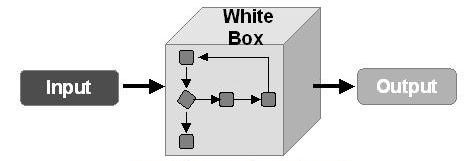System testing is a complete and integrated software program testing. Software, or what is commonly known as software, is just a unit element of a larger computer-based system. Typically, software is associated with other software and hardware.
Software testing can be divided into two namely Black Box Testing and White Box Testing.
Black Box Testing

Black Box Testing or commonly known as functional testing is a software testing method used to test software without knowing the internal structure of the code or program. In this test, the tester is aware of what the program must do but has no knowledge of how to do it.
The advantages of Black Box Testing are:
- Efficient for large code segments
- Code access not required
- Separation between user and developer perspectives
The disadvantages of Black Box Testing are:
- Coverage is limited because only a small portion of the test scenarios are carried out
- Inefficient testing due to the tester fortune from knowledge of internal software
White Box Testing

White Box Testing is a software testing method in which the internal structure is known to test who will test the software. This testing requires internal knowledge about system and programming capabilities.
The advantages of White Box Testing are:
- Efficient in finding errors and problems
- Required knowledge of the internal software being tested is useful for thorough testing
- Lets find hidden errors
- Help optimize code
Weaknesses of White Box Testing are:
- Requires high level of knowledge of internal software that is being tested
- Requires code access
Software Testing Hierarchy
Software testing has a sequence of things that need to be done. The following are categories of software testing arranged chronologically:
Unit Testing: Testing is carried out on each module or block of code during development. This test is usually done by developers who write code.
Integration Testing: Testing carried out before, during and after integration of new modules into the main software package. This test involves testing each code module from each individual. One software can contain several modules which are often made by several different developers.
System Testing: Testing conducted by professional testing agents on software products that have been completed before the software is generally introduced.
Acceptance Testing: Beta testing of products carried out by actual end users.
Types of System Testing
There are about 50 types of system testing. Of the 50 types, there are several system tests that are usually used by large software or software development companies. Some of these types include:
Usability Testing: This test focuses on the ease of users in using applications, flexibility in handling controls and the ability of the system to fulfill its objectives.
Load Testing: This testing is needed to know that a software solution will work under a real load.
Regression Testing: This test involves testing carried out to ensure that no changes made during the development process have caused new bugs. It is also used to ensure that no old bugs arise from the addition of new software modules from time to time.
Recovery Testing: This test is carried out to show software solutions that are reliable, trustworthy, and can successfully cover the possibility of a crash.
Migration Testing: This test is carried out to ensure that system software can be moved from the old system infrastructure to the current system infrastructure without problems.
Functional Testing or Completeness Testing: This test requires thinking about the possibility of missing functions. Testers create additional functional lists that can be developed by a product during the functional testing process.
Hardware / Software Testing: This test occurs when the testers focus on the interaction between the hardware and system software during the system testing process.





